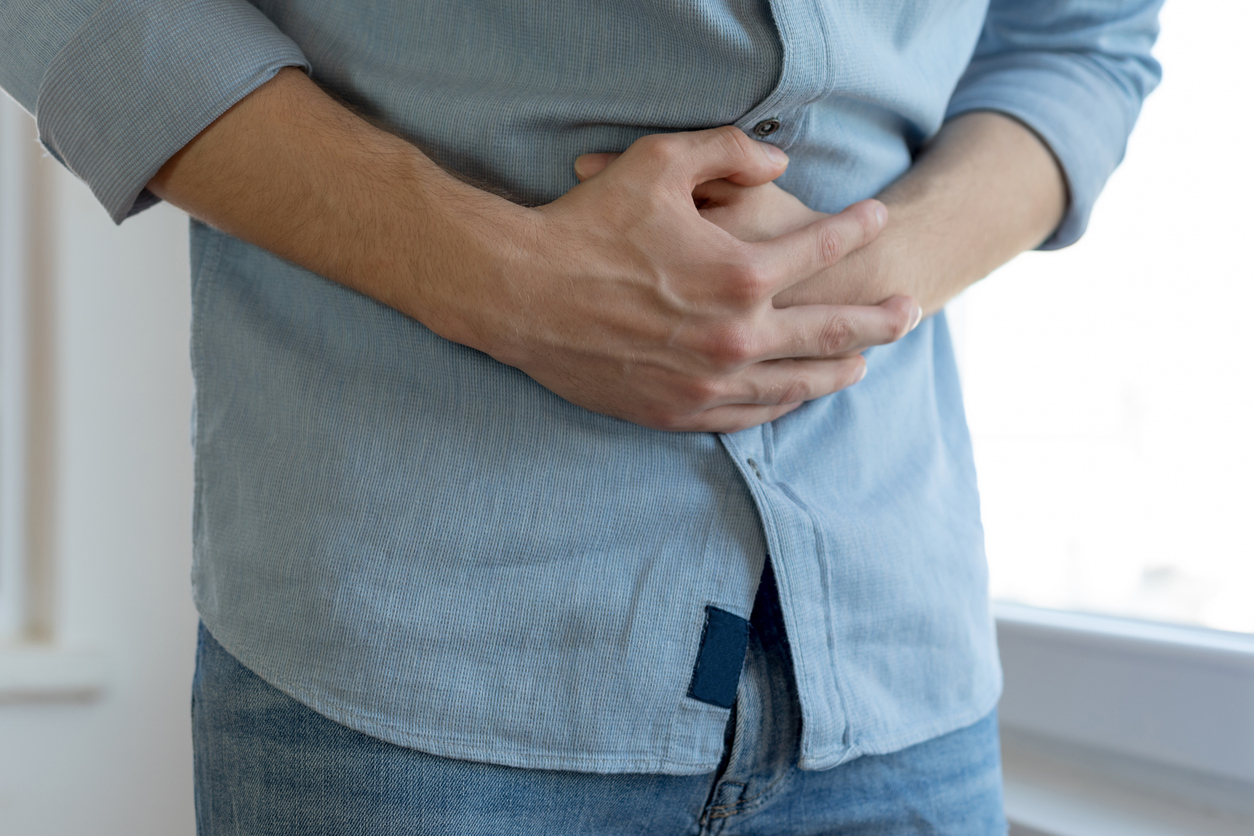Women, especially during pregnancy or on estrogen therapy, face higher gallstone risk. In India, doctors now report rising cases among young professionals, tied to poor diets, long work hours, and irregular eating habits
Published Jun 12, 2025 | 8:00 AM ⚊ Updated Jun 12, 2025 | 8:00 AM

Young man having stomach ache
In what doctors are calling one of the most unusual surgeries of the year, over 8,125 gallstones were removed from the gallbladder of a 70-year-old man at Fortis Memorial Research Institute in Gurgaon last month. The patient, who had been suffering from persistent abdominal pain, general weakness, and bouts of fever for nearly five years, underwent a laparoscopic cholecystectomy — a minimally invasive surgery to remove the gallbladder. The sheer number of stones shocked even seasoned surgeons.
But this isn’t just a one-off story meant to evoke awe. Doctors are using this case to spotlight a silent, slow-developing condition that affects millions: gallstone disease.
Gallstones are hardened deposits that form inside the gallbladder, a small organ located just beneath the liver. Dr Ganesh Shenoy K, Director of Department of Surgical Gastroenterology at Kauvery Hospitals in Bengaluru explains that the gallbladder’s primary function is to store and release bile — a digestive fluid that helps break down fats.
When the chemical composition of bile becomes imbalanced — often due to excessive cholesterol, increase in estrogen during pregnancy, diet rich in oxalate or when the gallbladder doesn’t empty efficiently — solid particles begin to form. These eventually develop into stones. Majority of the storens, Dr Ganesh says are cholesterol stones.
Doctors explain that some individuals form just one or two. Others, like the man in Gurgaon, can develop thousands over time, often without realising the extent of the problem until it becomes critical.
Dr Amit Javed, the lead surgeon in the Gurgaon case, explained that gallstone disease is more widespread than we think, and not always confined to older adults. “We’re seeing a rising number of young and middle-aged patients with symptomatic gallstones. Irregular eating patterns, processed diets, sedentary lifestyles — these are contributing to gallbladder dysfunction far earlier in life,” he said.
Dr Javed explains that the initial signs of gallstones can be misleading. Many people experience a nagging pain in the upper right part of the abdomen, especially after heavy or fatty meals, and assume it’s just gas or indigestion. For others, the pain can be sudden and severe, sometimes radiating to the back or right shoulder.
“Nausea and vomiting are common. In more advanced cases, if the gallstones block the bile ducts or cause infection, patients can develop fever, jaundice, or even pancreatitis — a painful inflammation of the pancreas,” he added.
Dr Ganesh adds that it can be dangerous to ignore gallstones once diagnosed. He said, “it can lead to complications like infection fo gall bladder and pancreas. Stones can slip down from gall bladder and block the bile duct causing jaundice in 10 to 20 percent of the cases. Rarely, it can also lead to gall bladder cancer,”
Dr Ganesh explains, diagnosis typically begins with a simple abdominal ultrasound, which can easily detect the presence of stones. In more complex cases, doctors may recommend CT scans, MRIs, or a specialised HIDA scan to assess the gallbladder’s functionality. Blood tests may also be ordered to check for signs of infection or liver stress.
The standard treatment procedure is a laparoscopic cholecystectomy, where the gallbladder is removed through tiny incisions. It’s considered low-risk, with most patients discharged within 24–48 hours. While the idea of living without a gallbladder might sound alarming, the truth is that the body adjusts well.
Stressing that gallbladder is not a very essential organ for digestion or life and people can easily live without it. Doctors add that bile flows directly from the liver into the small intestine, and most people can return to normal life within days, with minimal dietary restrictions.
Dr Javed says, the answer lies in a combination of factors. Women are generally at higher risk, particularly during pregnancy or if they use estrogen-based therapies. Genetics plays a significant role — a family history of gallstones increases your risk. Obesity, rapid weight loss, diabetes, and poor diet are all common contributors.
In India, doctors are now observing a disturbing trend — more young professionals in their 30s and 40s presenting with gallstones, likely linked to erratic meal patterns, long work hours, and fast food-heavy diets.
“We are seeing a shift. What was once a disease of older, sedentary women is now becoming increasingly common among working professionals — both men and women — in their peak career years,” says Dr Ganesh.
Dr Ganesh adds that it can affect any age group from children to old people. The lesson from the 8,125-stone case, according to doctors, is clear: don’t ignore the signs. That dull ache in your stomach after a heavy meal might be more than acidity. If left untreated, gallstones can lead to severe infections, organ damage, or even raise the risk of gallbladder cancer. On the other hand, early detection and simple surgery can offer a permanent solution.
(Edited by Ananya Rao)
